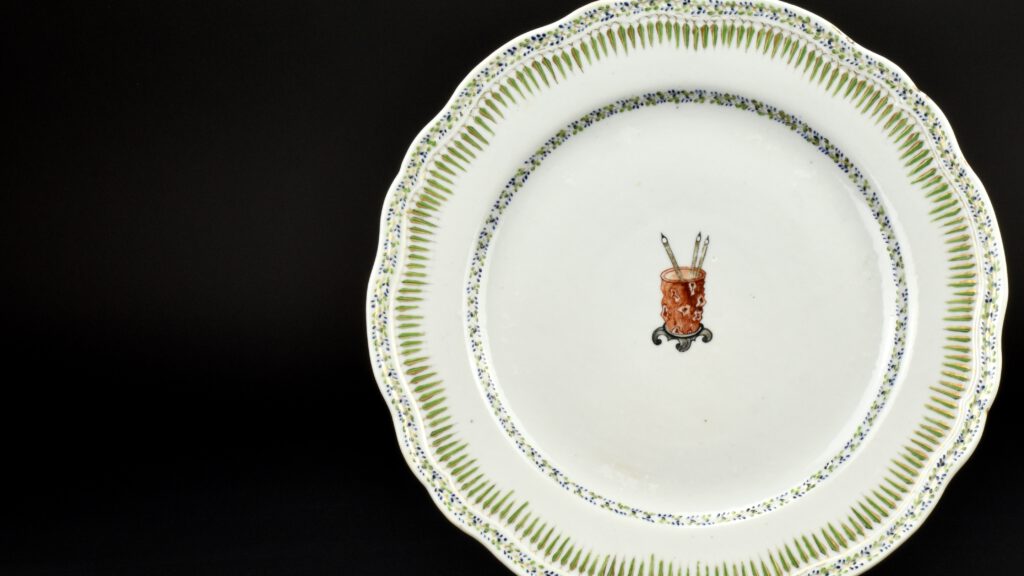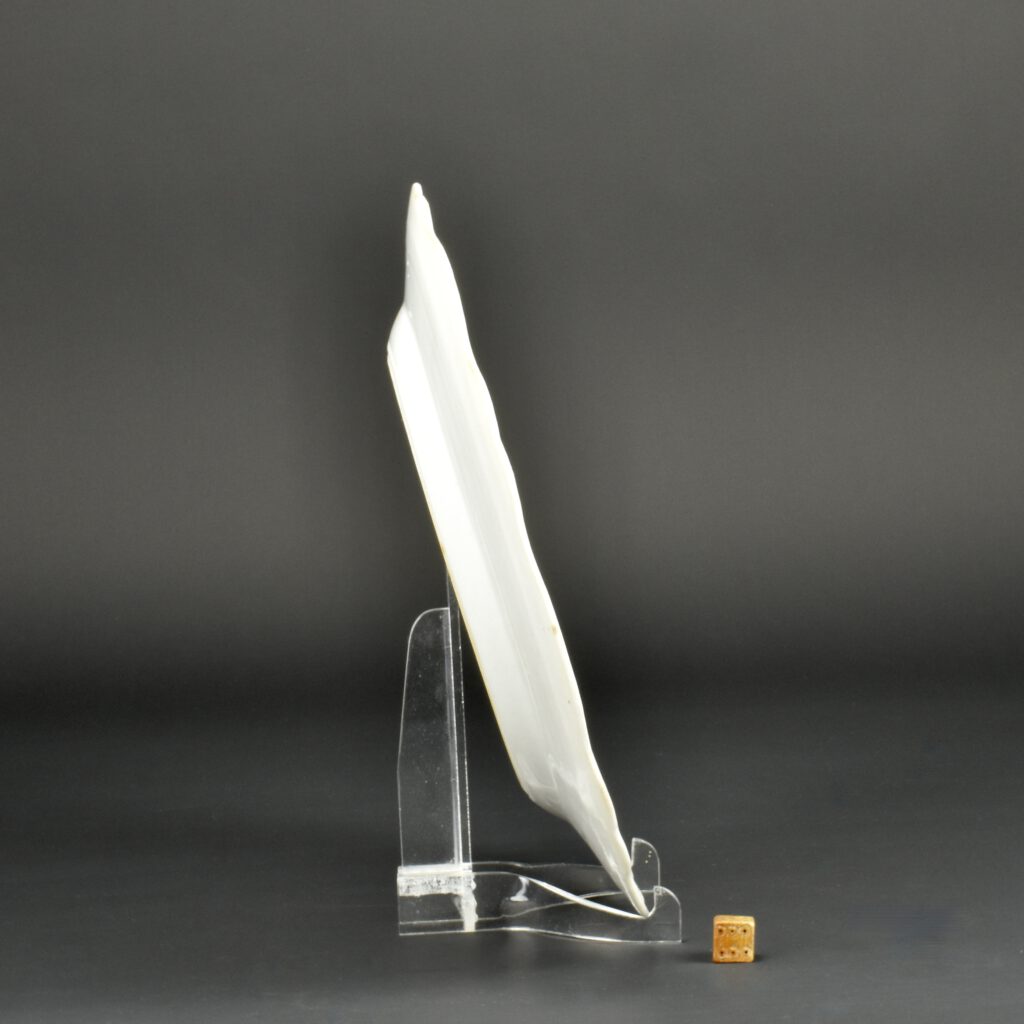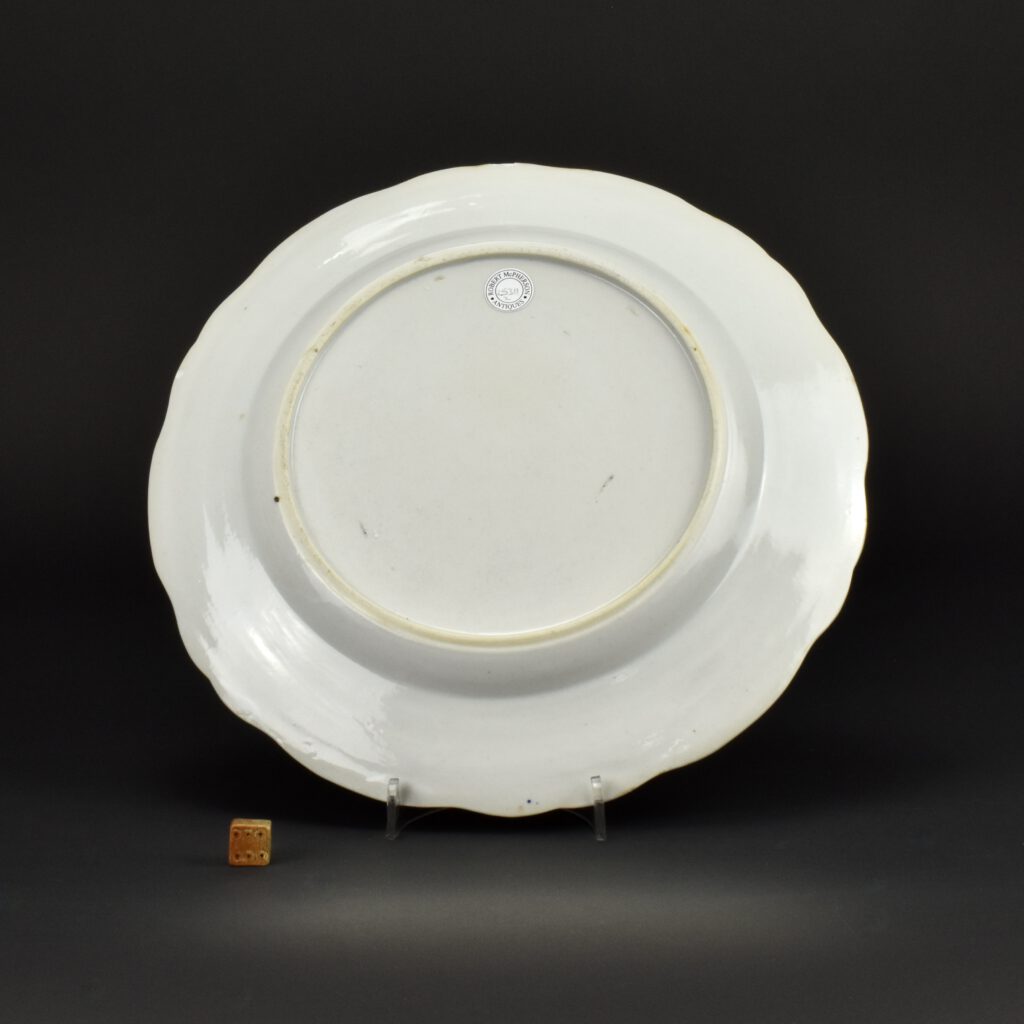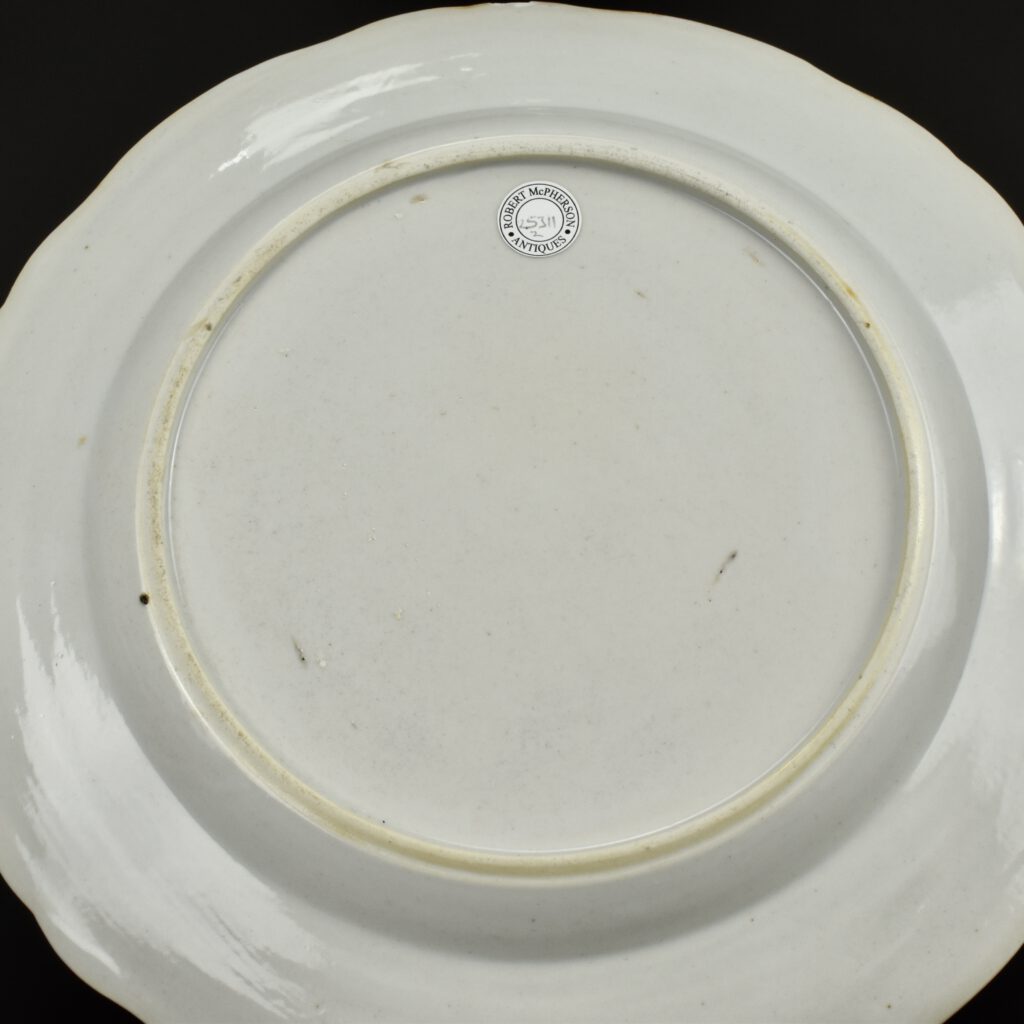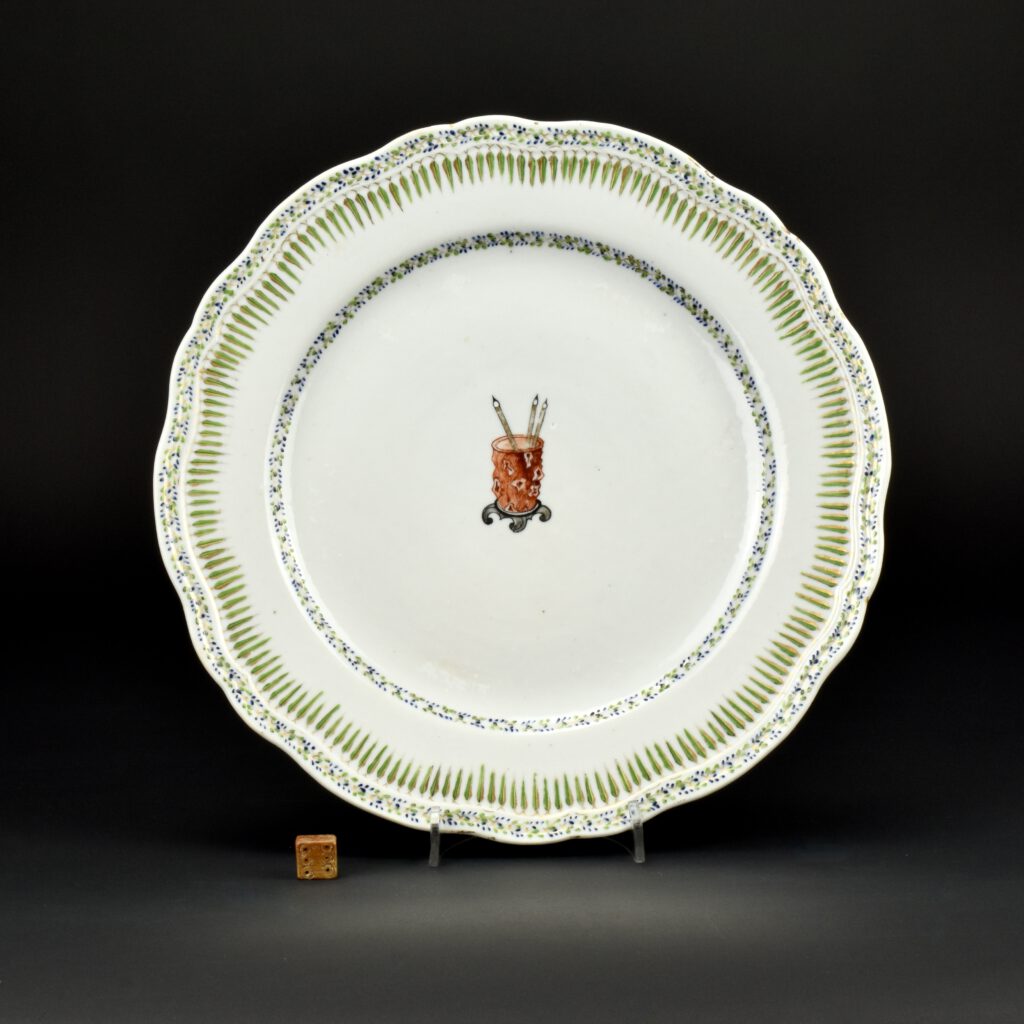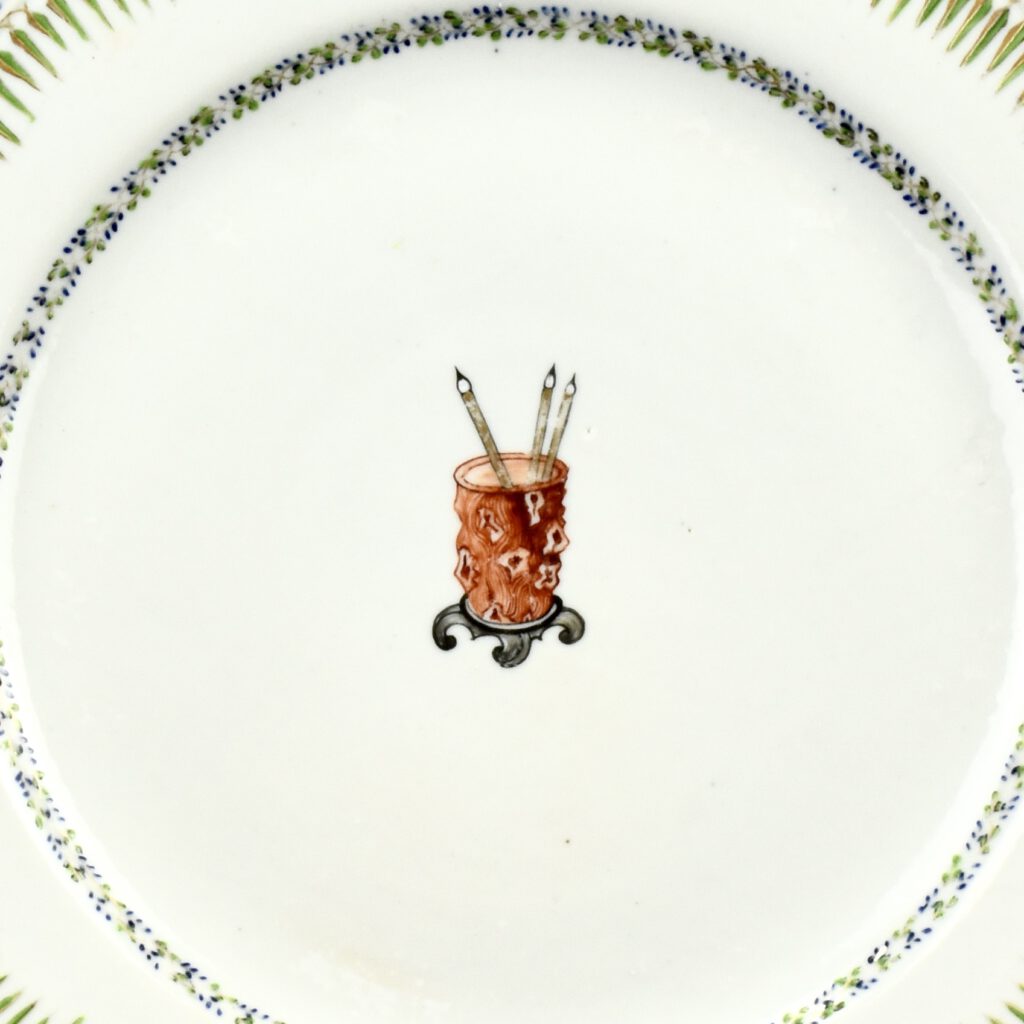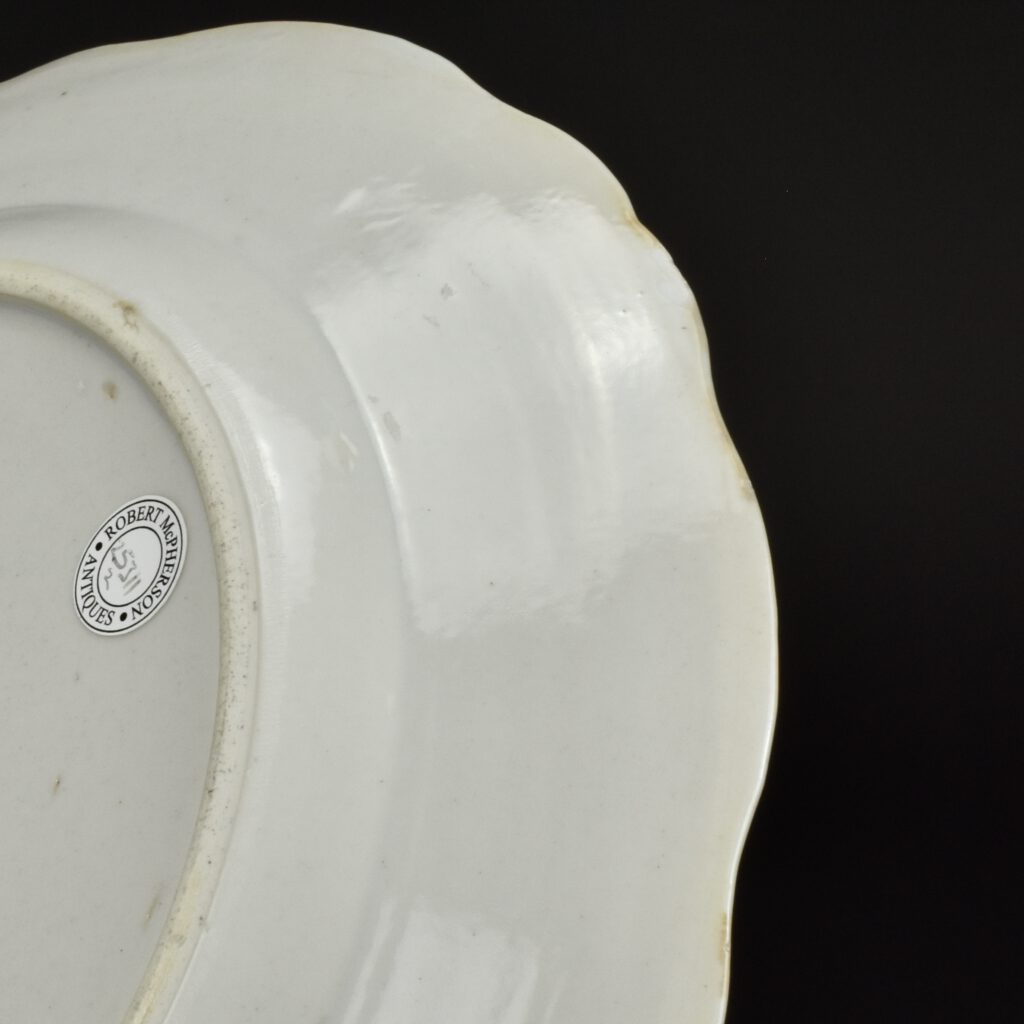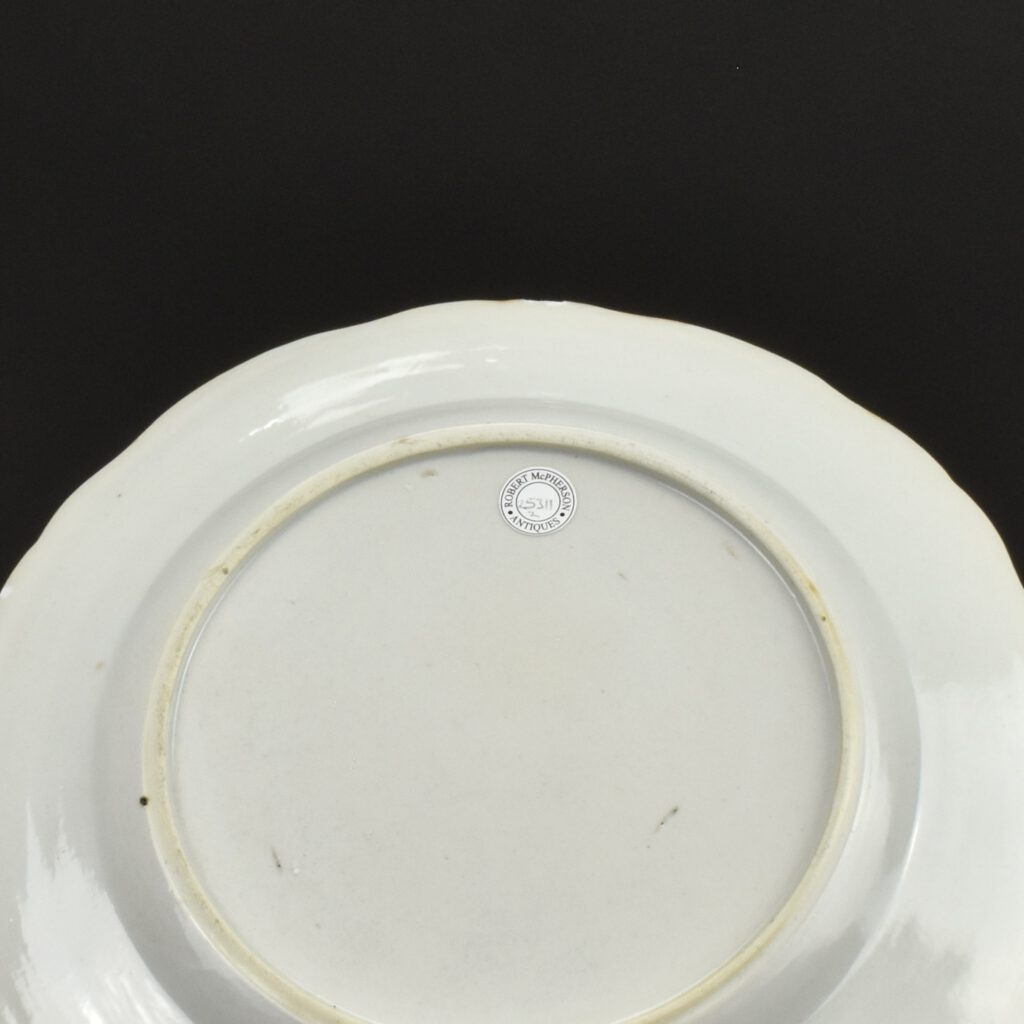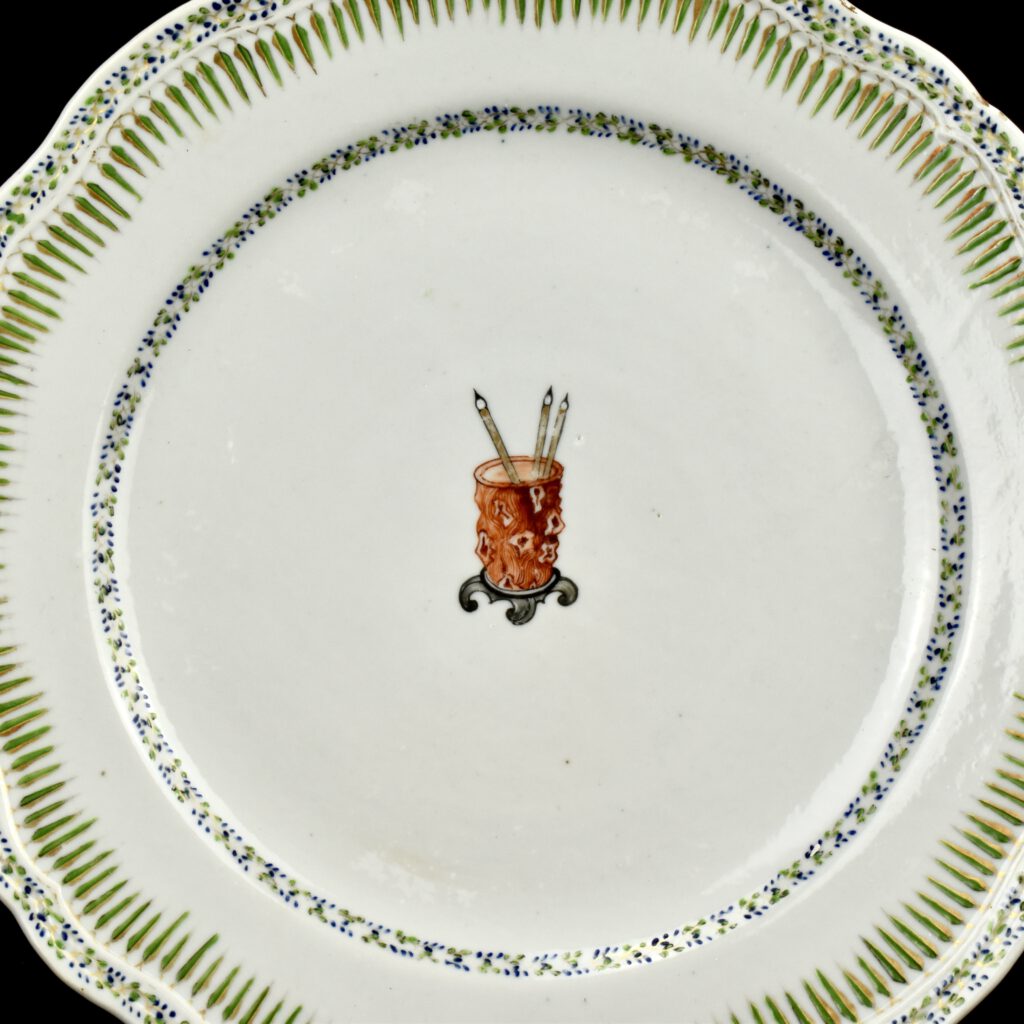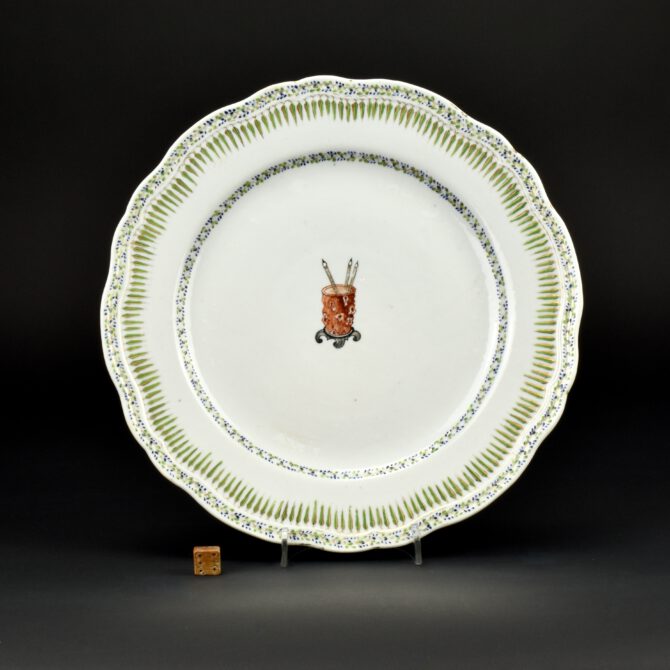
A Very Rare Chinese Export Porcelain Plate, Late Qianlong Period
A Very Rare Chinese Export Porcelain Plate, Late Qianlong Period c.1790. This plate is based on a European metal form and probably silver, rather than a pewter shape. What makes this plate so rare and interesting is the central subject matter. Surrounded by European Neo-Classical designs is a Chinese brushpot with brushes, the epitome of Chinese scholarly taste. The rough gnarled wood brushpot, probably made of Cypress or box wood, is displayed as if in a scholars’ studio on a dark wood stand. Brushpots were not exported to Europe or North America, so they would have been unfamiliar to Europeans. There were workshops in Canton that made a living painting pieces to order, I think it is highly likely the inclusion of a brushpot was a special request. The borders were standard, shown to customers in Canton via sample plates, each plate displaying a variety of designs for you to choose from. Perhaps a Western Captain, or merchant, thought to have the brushpot added to the center of the plate, after all there would have been plenty of brushpots on display in the bustling Canton studios. A reminder of another world perhaps. I have had the two plates of this design in storage for a number of years, hoping to find another example but with no luck, hopefully someone will have seen another example of this design.
GIFT TO A MUSEUM
- Condition
- Minor glaze chips to the back, see Photograph Gallery below. Minor wear to gilding.
- Size
- Diameter 24.6 cm (9 1/2 inches)
- Provenance
- N/A
- Stock number
- 25311-1
- References
- For a sample plate at the Victoria and Albert Museum see lower down the page. For a Xuantong (1909-1911) wood brushpot with a similar appearance see lower down the page under the Photograph Gallery. For further information see - Brushpots: A Collector’s View (Sam Marsh. Publisher CA Book Publishing ISBN: 9789887440895)
Information
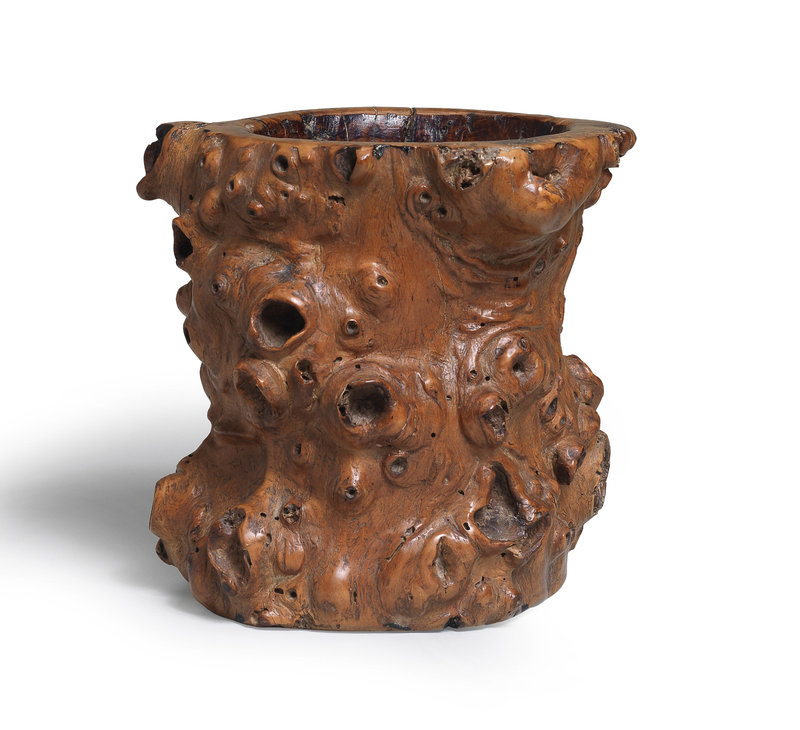
A Gnarled Cypress Wood Brushpot, Xuantong (1909-1911).
The vessel with numerous gnarled and hollowed 'eyes, the wood of amber-honey tone, the base incised with seal mark and maker's signature.
Provenance: Adrian M. Joseph (d.2010), Hong Kong, 1978.
Published and Illustrated: S.Marsh, Brushpots: A Collector's View, Hong Kong, 2020, pp.60-61.
Note: The present lot bears the seal of the Xuantong emperor (r.1909-1911), the last emperor of China, as well as a three-character inscription, Fuchen zhi ('made by Fuchen'). See a related burlwood brushpot, Qing dynasty, which was sold at Sotheby's Hong Kong, 30 November 2021, lot 585.
Sold : The Marsh Collection, Art For The Literati, 3rd of November 2022 Bonham's London.
Brushpots: A Collector’s View
By Sam Marsh.
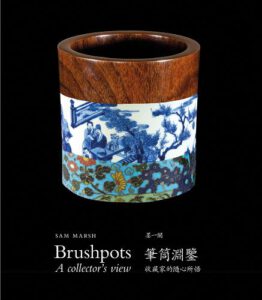
The Chinese title of this book reads “The Profound Reflection of Brushpots: A Collector’s Enlightenment” literally, citing reference to the book Imperial Profound & Reflective Encyclopedia commissioned by Emperor Kangxi of the Qing Dynasty, and The Collected Works of Long Ying, published during the reign of Emperor Wanli, Ming Dynasty. The word “Profound” was chosen meticulously to highlight the breadth and variety of the brush pots collected, and the proposition of their illustrations. The author’s intent to make this book an encyclopedia of brush pots was fairly explicit. On the other hand, “reflection” comes from a mirror, which shows how you look and who you are. It represented the collector’s experience in soul-searching and self-reflection during his journey of art appreciation.
Text in English and Chinese.
Publisher: CA Book Publishing
ISBN: 9789887440895
Number of pages: 288
Weight: 1626 g
Dimensions: 282 x 239 mm
A Rare Sample Plate at the Victoria and Albert Museum


